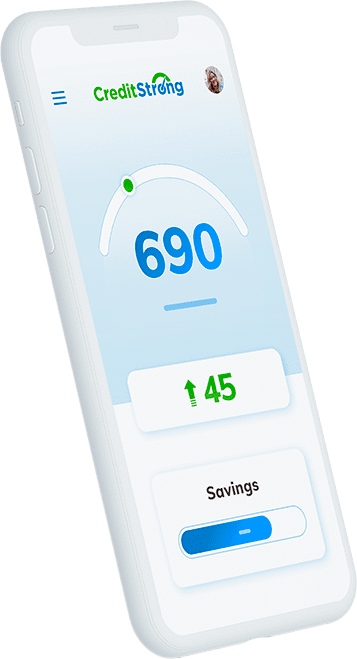How to Repair Business Credit

Build strong business credit
with your EIN

Good credit is essential for obtaining the financing many businesses need to grow their operations. If your business credit has suffered some setbacks, you’ll need to rebuild it before applying for new loans or credit cards.
Repairing bad credit works a little differently from establishing it the first time. Here’s what you need to do.
Step 1: Get Access to Your Credit Scores and Reports
The first step in every credit repair journey is to get an accurate picture of your current credit situation. That means gaining access to all of your relevant credit scores and reports, which you’ll need to help plan your efforts and monitor your progress.
The most significant business credit reports are from Dun & Bradstreet (D&B), Experian, and Equifax. These are the three major commercial credit bureaus. They also provide some of the most popular business credit scores, including:
- D&B’s PAYDEX
- Experian’s Intelliscore Plus
- Equifax’s Business Delinquency Scoring Services
Unfortunately, obtaining your business credit scores and reports can cost you more money than getting your personal ones. The Fair Credit Reporting Act only covers consumers, not businesses, so you’re not entitled to free copies of your business data.
One of the best ways to access all of this information in a single location is by paying for Nav’s credit monitoring service. It has four tiers that range from free to $49.99 per month, and all of the paid ones include your personal and business scores and reports.
If you’re willing to pay for the third tier, Nav will report your payments to the credit bureaus and help you repair your poor credit. Pay for the fourth tier, and they’ll also give you access to your FICO Small Business Scoring Service.
That’s the credit score that the Small Business Administration uses to prescreen applications for their loans. Nav is the only place you can get access to it.
Step 2: Dispute Any Errors You Find
Unfortunately, errors on business credit reports are more common than you might think. Once again, businesses don’t have the same protections that consumers do. As a result, commercial credit bureaus can be much sloppier about getting information right.
For example, to add an account to your personal credit report, each credit bureau must match it to your name, Social Security Number, address, and date of birth.
Conversely, commercial credit bureaus only need to match an account to a business name and address, and neither needs to be exact. As a result, there are often misattributed accounts in your business reports that can harm your credit score.
In fact, the Consumer Financial Protection Bureau and Federal Trade Commission have recently gone after D&B for failing to update errors on business credit reports that have cost business owners opportunities for financing.
If you find an error on your credit report, you must dispute it with the credit reporting agency that manages the file. If the same issue shows up with all three bureaus, you still must take action three separate times.
Unfortunately, the lack of legislative protections for businesses means the dispute process isn’t well defined.
You can find some insight into the steps involved for Experian, Equifax, and D&B on their respective websites, but it may be more efficient to call their customer support numbers for assistance.
Step 3: Negotiate Negative Credit Accounts
If you’re trying to repair your business credit, you probably still have outstanding accounts that negatively impact your scores. Before working on a positive credit history, you should eliminate the debts that hold you back.
Unfortunately, it can be difficult to dig yourself out of debt once you fall behind on your monthly payments. Delinquencies often cause additional penalties and interest that compound your cash flow problems.
If there are multiple delinquent accounts that you’re struggling to manage, it’s worth reaching out to your creditors and trying to come to an arrangement. They often prefer not to go through lengthy and expensive collection processes.
As a result, there’s a chance you’ll be able to negotiate relief that’ll help you catch up on your delinquent accounts, such as an extended payment plan or a debt settlement.
If you come to any arrangement with your creditors, make sure you get it in writing to confirm everyone is in agreement on the details and that they’ll honor their promises.
Step 4: Pay Down Your Debt Balances
Once you’ve negotiated with your creditors or debt collectors and eased the path to eliminating your negative credit accounts as much as possible, it’s time to start paying off your debts. You can do it with a single lump sum or installments over time.
There are several approaches to the latter, but the two most popular are the following:
- Debt snowball: Make the minimum monthly payments on all your credit accounts, then redirect your excess cash flow to the debt that has the lowest remaining balance.
- Debt avalanche: Make the minimum monthly payments on all your credit accounts, then redirect your excess cash flow to the account with the highest interest rate.
The avalanche approach saves you the most money, but the snowball method often feels more satisfying. If you can stick to your payment plan without much encouragement, the avalanche method will generally be superior.

Step 5: Lower Your Credit Utilization Ratio
Your credit utilization ratio equals the amount of debt you have outstanding divided by your credit limit. You can apply it to loans, but it’s usually a metric for revolving debts. Creditors may calculate it for your individual tradelines or your overall credit profile.
For example, say you have a business credit card with a $10,000 limit. If you’ve accrued a $7,000 balance on the account, you’d have a 70% credit utilization ratio.
Ideally, you want to keep your utilization ratio between 1% and 10%. It’ll give you the most points on your credit scores and look the best to creditors. However, you can get away with a ratio of up to 30%.
Credit utilization isn’t as impactful to your business credit scores as your personal scores. However, it still affects some significant ones, including Experian’s Intelliscore Plus.
Even when credit utilization doesn’t factor into a creditor’s preferred business credit score, they may consider it independently. As a result, it’s well worth addressing during your business credit repair journey.
Step 6: Diversify Your Tradelines
If you catch up on your delinquent accounts and reduce your credit utilization to manageable levels, you should have some cash flow to spare. That gives you the flexibility to acquire new tradelines and expand your open business credit file.
There are two types of tradelines that build business credit:
- Vendor tradelines: These accounts include credit from other businesses, such as net 30 payment terms from a supplier.
- Financial tradelines: These are traditional credit accounts from lenders and card issuers, including small business loans, lines of credit, and credit cards.
Both types of tradelines have their place in credit repair. Vendor tradelines are easier to qualify for and help you quickly increase the number of tradelines in your credit reports.
Financial tradelines may be harder to qualify for, but they’re more impactful to your business credit. Take your time going after them, and make sure you pursue accounts you can consistently pay on time.
Step 7: Build a Positive Credit History
With a diverse set of vendor and financial tradelines open, all that’s left is to use them responsibly. Keep your revolving debt balances at a reasonable level and make your debt payments on time and in full every month.
While this is the most straightforward step in the credit restoration process, it’s also the longest, most vital, and easiest to mess up.
To avoid repeating the mistakes that forced you to repair your credit in the first place, consider working with a credit counseling agency. They’re non-profit organizations that can help you stick to your budget and avoid late payment problems.
One of the best ways to build business credit is with a CreditStrong Business credit builder loan. We use your funds as collateral, so we don’t even have to check your credit when you apply.
Once you sign up, you can report up to $10,000 of installment debt and 25 months of positive payment history to the commercial credit bureaus. If you accomplish your credit goals sooner, you can cancel at any time without penalty. Give it a try today!
Step 8: Avoid Paying for Credit Repair Services
It’s tempting to try and outsource this process to a credit repair company, but it’s usually more trouble than it’s worth. Despite the regulations written in the Credit Repair Organizations Act (CROA), the credit repair industry is rife with scam artists.
Unfortunately, discerning a legitimate credit repair business from a dishonest one isn’t always easy, even if you sort through their reviews on sites like the Better Business Bureau. If you fall prey to a credit repair scam, it’ll cost money you need for your debts.
In addition, even the best credit repair company won’t do anything you can’t do on your own. Most of them merely complete the dispute letter process on your behalf. Instead of paying for a credit repair service, it’s often best to save your money for your debts.
Whether or not you engage a credit repair agency, building your business credit can be long and intensive. However, waiting only makes it more difficult, so get started today!
CreditStrong for Business is the only 0% interest business credit builder in the nation
